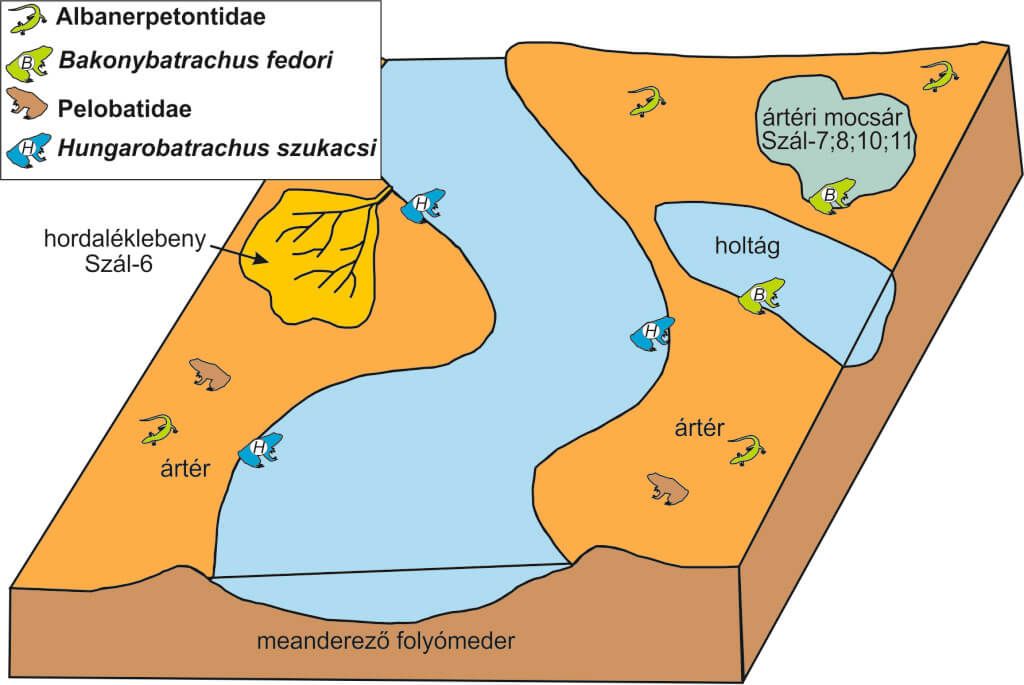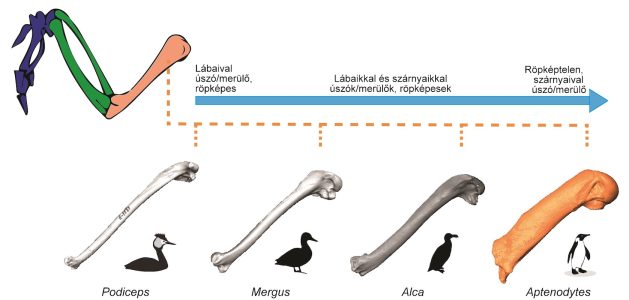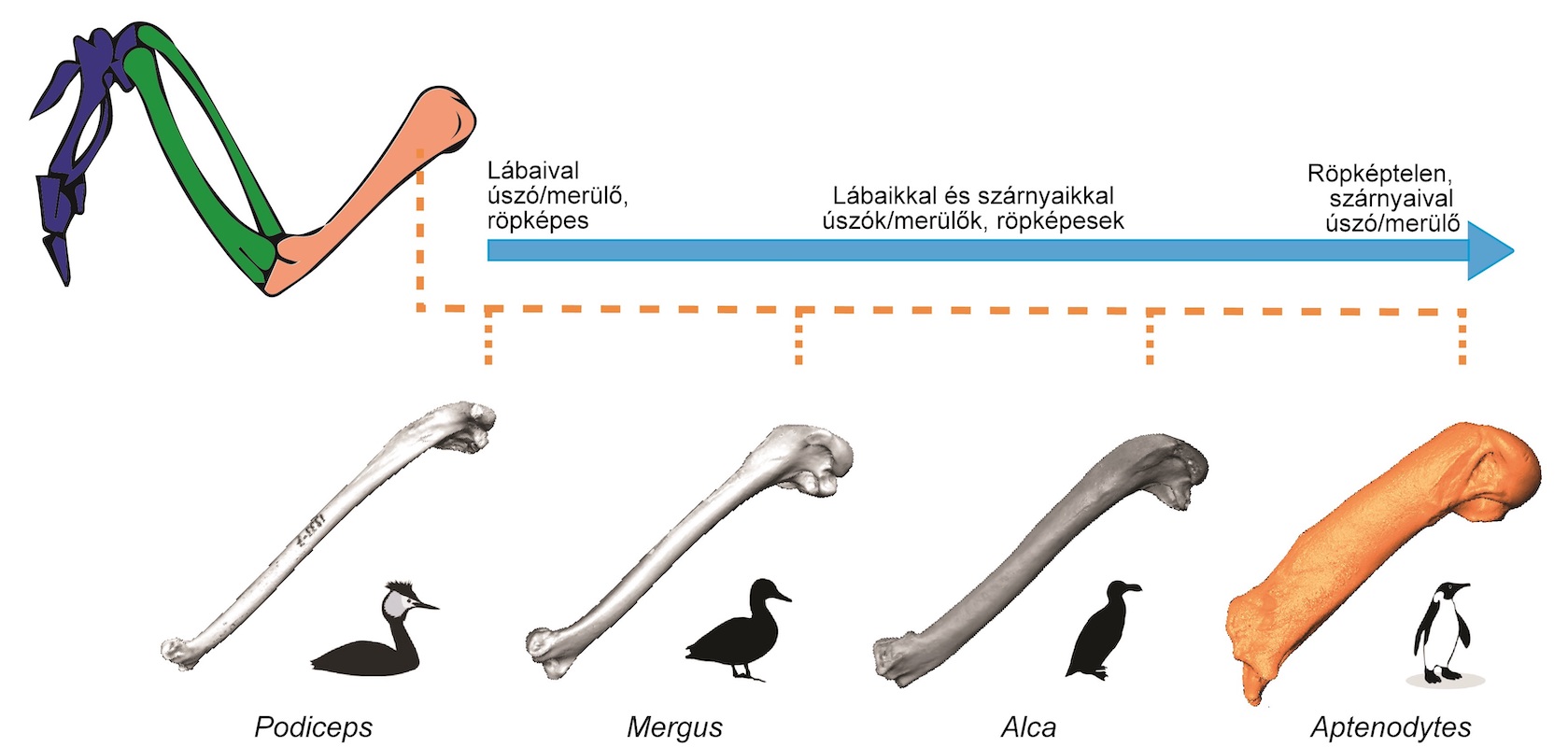
Studies of Mesozoic amphibians
A lot of hitherto unknown fragmentary frog skull bones unearthed from the Iharkutian Late Cretaceous (Santonian) paleovertebrate locality…

Birds originated in the Jurassic, and later diversified occupying different media and environments. Nowadays they represent one of the most diverse and numerous groups of tetrapods. Fossils of the first aquatic birds are already known from the Cretaceous, and their number and diversity highly increased during the Cenozoic.
The morphology and locomotion types of aquatic birds is very diverse: the best swimmers have lost their ability to fly, or sometimes their ability to walk on land. However certain species are both effective swimmers, fliers, and walkers. The skeletal system of aquatic birds had thus to become suitable for the effective locomotion in the various media with drastically different physical parameters, which required trade-offs in their morpho-functional adaptations.
The aim of Martin Segesdi’s project is to understand the influence of lifestyle and locomotion on the morphology and inner structure of bones with geometric morphometrics and study of inner structure, in order to highlight these evolutionary patterns in the course of birds adaptation to an aquatic environment. The project involves study of recent and fossil birds, and also comparison with other (recent and fossil) tetrapods with similar ecologies.

A lot of hitherto unknown fragmentary frog skull bones unearthed from the Iharkutian Late Cretaceous (Santonian) paleovertebrate locality…

The studies of the Iharkút fish-fauna turned to be an unexpectedly informative segment of our researches…

There are many groups in the vertebrate life of the Mesozoic in Earth history that no longer exist today …

Birds originated in the Jurassic, and later diversified occupying different media and environments…